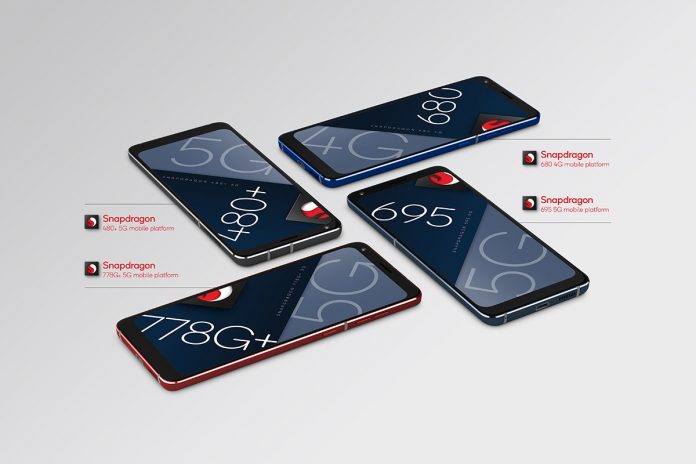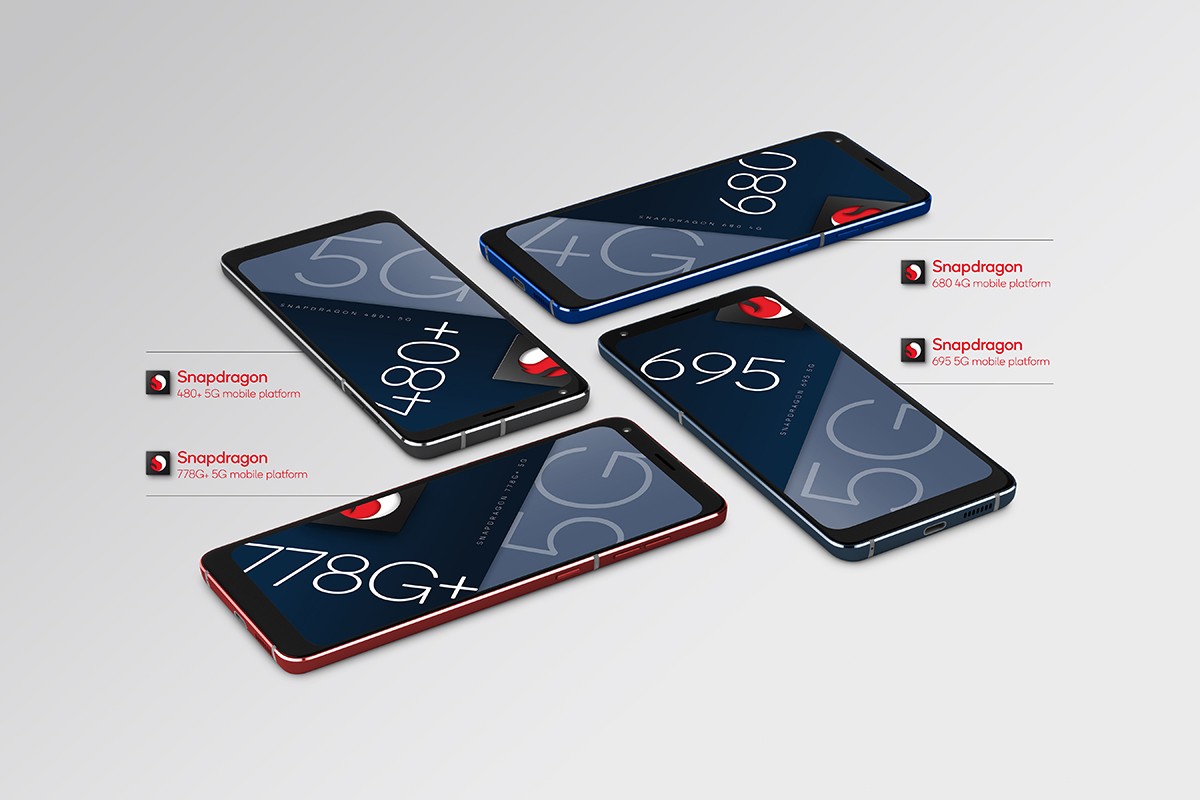Qualcomm just announced two new chipsets and two Plus versions of existing chips. The focus is on 5G connectivity, although there is a new 4G-only option. Also, three of the four use a contemporary (but affordable) 6 nm node.
Snapdragon 778G+
With the original Snapdragon 778G, we expect this new chip to be even more popular among luxury mid-rangers. It’s still made using a 6 nm technology, but it’s been improved for faster clocking.
2.50 GHz Kryo 670 Prime core (up from 2.4 GHz). The Adreno 642L GPU has also been improved by 20%. And the rest is the same as before: an X53 5G modem (3.7 Gbps downlinks, 1.6 Gbps uplinks), and so on.
Snapdragon 695
This is the Snapdragon 690’s successor, including mmWave 5G capability (which the 690 lacks). This could help carriers promote their mmWave networks, but there are also some performance improvements.
The Snapdragon 695 additionally enhances CPU and GPU performance by up to 15% and 30% respectively. It uses the newer CPU cores Kryo 660 (vs. 560 on the previous processor) and Adreno 619 (vs. (vs. 619L).
The node is also a 6 nm chip, replacing the older 8 nm chip, which could improve energy efficiency.
Snapdragon 680:
Now pay attention because things become messy. Snapdragon 680 with 4G LTE modem for basic mid-range phones. It’s a blend of classic and modern features.
For starters, it shares a 6nm node with its siblings. However, it uses Kryo 265 CPU cores, which are apparently improved versions of Kryo 260 processors found in the Snapdragon 662. (an 11 nm chip). It has the same Adreno 610 GPU.
Finally, a triple ISP, a Spectra 346, will service cameras. In high-end designs, triple ISPs allow the chipset to process images from three cameras simultaneously.
Snapdragon 480+
The Snapdragon 480 was Qualcomm’s first 400-series chipset with a 5G modem, making it a popular choice for lower-cost 5G phones. It’s almost identical, but faster.
An 8nm Snapdragon 480+ featuring Kryo 460 CPU cores and an Adreno 619 GPU. In addition to the prime CPU being faster than before, the GPU has been improved.
The Snapdragon 680 can only drive 1080p+ monitors at 90Hz. The 480+’s X51 modem supports both sub-6 and mmWave 5G networks.
We’ll have to wait for actual results, but the Snapdragon 680 should be more power-efficient and faster than the 480+. The cost of each chip will also affect smartphone makers’ decisions.
The Source link contains quotes from Qualcomm’s partners. But some producers do show a preference for certain chips. HMD Global, a maker of Nokia phones, wants the Snapdragon 480+. (it has already used the original 480 in several models). Oppo appears to be eyeing the Snapdragon 695 for mmWave support. Xiaomi wants the 695 and the 778G+.
When will the first gadgets with the new chipsets be available? Because the Plus models use the same hardware, they should be out before the new designs. Expect new phones with these CPUs from the top vendors plus Motorola, vivo, and Honor.






